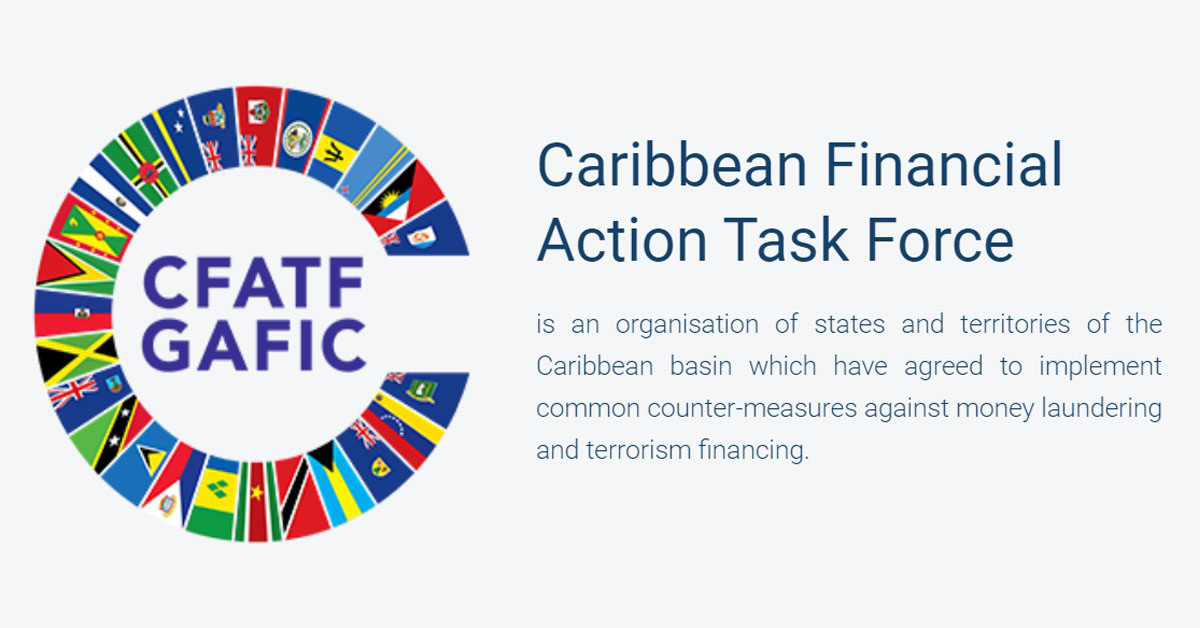– CFATF report
Guyana has made significant progress in improving the understanding of laundering and terrorism financing risks, according to the recently published Caribbean Financial Action Task Force (CFATF) Mutual Evaluation Report (MER) and has been recognised for improvements made since the last evaluation.
The Attorney General’s Chambers last evening released the Executive Summary of the report but not the full report. It said that the report “is a very comprehensive and somewhat complex document”.
The report summarises the anti-money laundering/counter financing of terrorism (AML/CFT) measures in place in Guyana as at the date of the on-site visit from September 4 to 15, 2023. It analyses the level of compliance with the FATF’s recommendations, the level of effectiveness of Guyana’s AML/CFT system, and provides recommendations on how the system could be strengthened.
Key findings
The report concluded that a) Guyana has made significant efforts to improve its understanding of AML/CFT risk via the conduct of multiple risk assessments. These included a national money laundering (ML) risk assessment in 2017 that was updated in 2021; a 2022 Non-Profit Organisation (NPO) terrorist financing (TF) risk assessment; and a 2023 sectoral risk assessment on the Extractive Industries.
However, it was pointed out that the risk assessment on the Extractive Industries was not finalised and approved prior to the end of the onsite visit. Notwithstanding, it stated that Guyana has made significant strides in the implemented activities and objectives contained within the National Policy and Strategy Plan (NPSP) to address identified risks such as strengthening cooperation and coordination amongst Competent Authorities (CA) and enactment of new, as well as revisions, to key legislation.
b) Guyana has a strong TFS (Targeted Financial Sanctions) -TF legislative framework and CAs have a general understanding of the TF risk profile established pursuant to the second NRA and the updated TF/(Proliferation Financing) PF Risk Assessment.
c) CAs in Guyana are able to access a wide range of financial intelligence and other information in the conduct of ML, TF and other predicate offences investigations. The FIU meanwhile, has access to a wide range of information including suspicious transactions reports (STRs), threshold transaction reports (TTRs) from reporting entities (REs), monthly currency declarations from GRA and monthly updates on basic and beneficial ownership from the Commercial and Deeds Registry.
d) The Bank of Guyana, Guyana Securities Council, Guyana Revenue Authority, Guyana Gold Board and Guyana Geology & Mines Commission were recognised for their application of strong licensing, registration and other controls at market entry, and in some instances during licence renewal, to prevent criminals and their associates from owning or controlling FIs and Designated Non-Financial Businesses and Professions (DNFBPs). In addition, there are adequate mechanisms to detect when Financial Institutions (Fis) and some DNFBPs breach the licensing and registration requirements.
e) Overall, financial institutions, with the exception of credit unions, have a good understanding of their ML/TF risk and AML/CFT obligations and apply mitigating measures to a large extent. The Dealers in Precious Metals and Stones (DPMS) and casinos are adequately supervised and have demonstrated a good understanding of their ML/TF risk and AML/CFT obligations.
f) The Mutual Assistance in Criminal Matters Act (MACMA), the Fugitive Offenders Act and the AML/CFT Act collectively provide a strong framework which enables the CAs in Guyana to seek and provide MLA, extradition and other forms of international cooperation to foreign counterparts.
Risks and General Situation
This section of the report noted that the location of the country, with most of its borders situated in the heavily forested hinterland region, makes Guyana vulnerable to drug trafficking and smuggling of its minerals (such as gold and diamond) as well as wildlife and lumber. It pointed out that the 2021 NRA mentioned the high value of estimated proceeds from drug trafficking (US$14.4 million) and gold smuggling (US$2.2 million). These, it noted, were among the predicate offences posing the highest ML threat along with tax evasion, fraud, corruption & bribery and human trafficking.
Overall Level of Compliance and Effectiveness
Here, the report stated that Guyana has good results on technical compliance with the FATF Standards having made improvements since the 3rd Round assessment in 2010. It also stated that the country made significant changes to its AML/CFT legislative regime in 2018, 2022 and in 2023. Further, Guyana has made changes and implemented efforts to improve effectiveness of its AML/CFT system subsequent to the AML/CFT legislative restructuring. “There is a good understanding of its ML risk and fair understanding of TF risk and the jurisdiction has developed policies and structures to combat ML and TF. Domestically, there is good coordination and cooperation among CAs.”
Notwithstanding the generally positive report out of the CFATF Mutual Evaluation Report, there were highlighted several priority action that were recommended that Guyana should initiate. These were listed as the following:
a) Upon completion and approval of the extractive industries risk assessment, update the National Policy and Strategy Plan (NPSP) as well as develop or enhance the policies of the respective CAs. There should be continued implementation of the objectives outlined in the NPSP ensuring all outstanding activities are completed.
b) Take the necessary measures to strengthen cooperation and coordination among law enforcement agencies responsible for the investigation of ML, TF and ML/TF related offences to ensure improved alignment of investigations.
c) Prioritise ML investigations and ensure that all types of ML matters are investigated, in alignment with the risk profile.
d) Ensure that LEAs are consistently pursuing confiscation in all matters.
e) Provide specialised training on prosecuting TF matters to the ODPP and on treating with both ML and TF matters to the Judiciary.
f) Establish measures to ensure information on the creation and types of LPs and LAs are publicly available; maintain adequate, accurate and current records of basic and BO information; and establish an effective framework to make such information available to CAs in a timely manner.
g) Upon institution of the GCC and the Real Estate Authority, implement risk-based supervision of attorneys-at-law, notaries, accountants, Non-Financial TCSP sectors and efficient transition of risk-based supervision of the real estate sector.
h) For DNFBPs, take measures (i) for supervisors to understand the ML/TF risk of all sectors and strengthen risk-based AML/CFT supervision; (ii) to improve the STR reporting by DNFBP sectors; and (iii) to enhance the sectors’ understanding of ML/TF risk and application of AML/CFT obligations.
i) Ensure that remedial measures and sanctions are proportionate and dissuasive and applied in a timely and effective manner to ensure a positive effect on compliance by FIs and DNFBPs.
j) Provide the necessary resources and take steps to improve the maintenance of relevant statistics and records relating to all forms of international cooperation, investigations and prosecutions.
k) Ensure that steps are taken to address all technical deficiencies related to TFS related to TF (including risk-based measures for the NPO sector) and PF and mechanisms are implemented to give effect to the mandatory freezing of assets and funds without delay.










